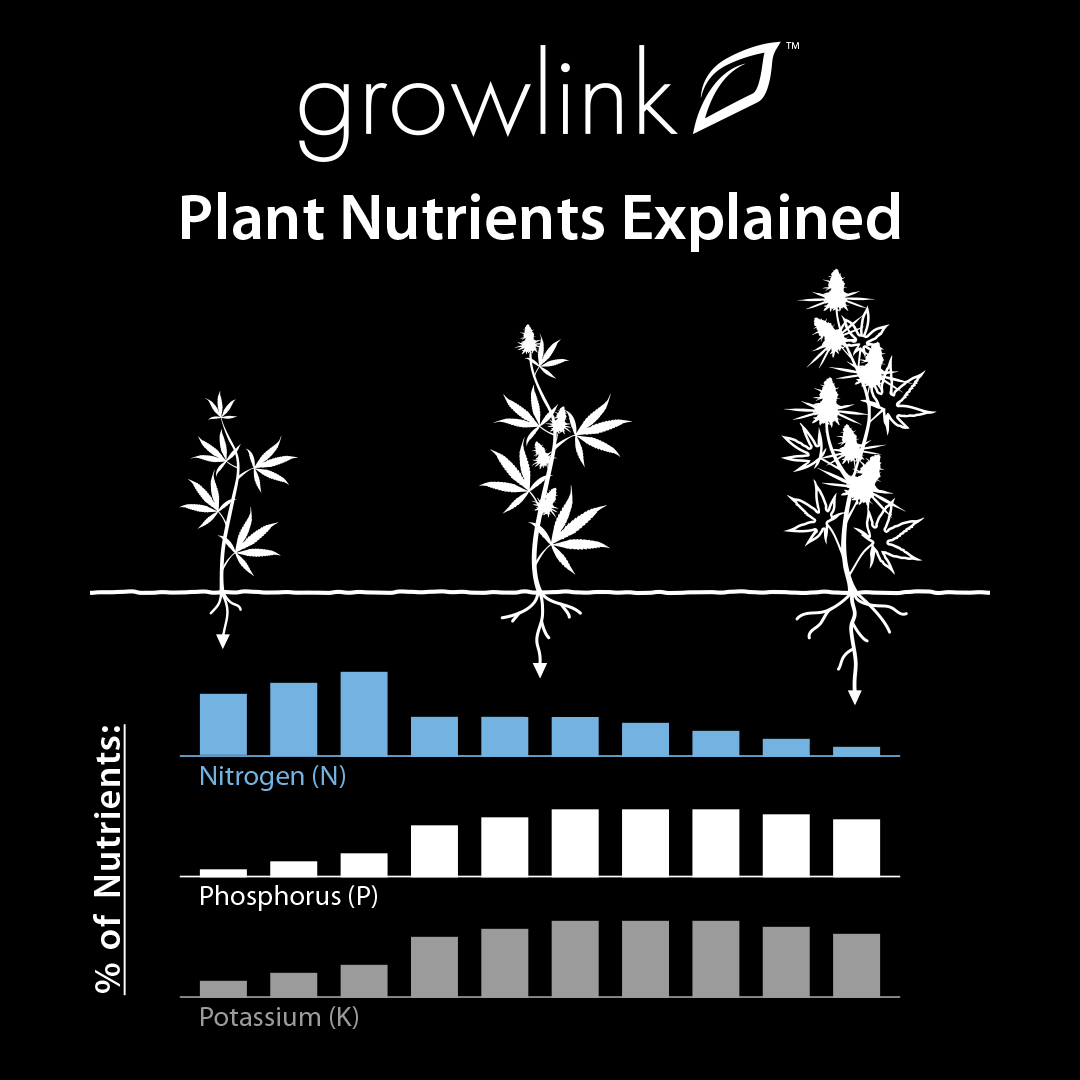Commercial Grade Nutrient Brands For Cannabis
Plant nutrients or fertilizers mimic the natural nutrients found in healthy soil, often with some added benefits. Since growing cannabis indoors is...
3 min read
.png) Marcus Baldinger
:
Sep 8, 2022 10:58:03 AM
Marcus Baldinger
:
Sep 8, 2022 10:58:03 AM

While most nutrient manufacturers already go through the legwork of mixing properly balanced nutrient blends for your plants, it is important to understand what’s inside them and how they help your plants. Apart from carbon, oxygen, and hydrogen, which are sourced from air and water, cannabis requires properly balanced ratios of macronutrients and micronutrients to perform optimally.

Primary macronutrients, Nitrogen, Phosphorus, and Potassium (NPK), comprise the bulk of common pre-blended nutrients available on the market. On each bag or bottle, you will find 3 numbers, such as 10-4-4, with the first number representing the available percentage of nitrogen, the second number phosphorus, and the third potassium. Each stage of cannabis growth requires a different ratio of these primary nutrients. In the vegetative state, cannabis needs a fertilizer with higher levels of nitrogen in comparison to phosphorous and potassium. Nitrogen is a main component of chlorophyll which helps to convert sunlight into energy and acts as a building block for proteins in a plant. These proteins are what allow the plant to form solid structures and grow vigorously. Nitrogen is also a part of ATP (adenosine triphosphate), which allows plant cells to control the use of energy.
During the flowering phase, higher levels of phosphorus and potassium are needed in relation to nitrogen. The primary role of phosphorus is to help make nutrients available for the plant to uptake. Plants use phosphorus to help form the nucleic acids DNA and RNA and to store and transfer energy. Phosphorus is also known to aid in root formation through its role in the division and organization of cells. Additionally, it is essential for the transferring of hereditary traits between phenotypes as well as producing large, healthy buds. Potassium plays a large role in osmoregulation, the passive regulation of water and salt concentrations in the plant by controlling the opening and closing of the stomata, and is necessary for the translocation of sugars and for starch formation. Potassium is also known to aid in resistance to diseases and assist in enzyme activation and photosynthesis.
Calcium, magnesium, and sulfur are known as secondary macronutrients. Calcium provides the building block for cell walls and membranes in the form of calcium pectate and must be present for the formation of new cells to occur. Calcium is responsible for plant vigor and stem rigidity in addition to proper root growth. Most calcium is sourced as calcium nitrate, which provides additional nitrogen, so many growers will often switch to calcium chloride during late flowering to help lower excess nitrogen levels. Magnesium acts as the central molecule in chlorophyll, and without it, plants aren’t able to generate the glucose needed for photosynthesis. Once magnesium has helped create the glucose, it then aids in metabolizing it to make it available for the plant to use. Sulfur is a constituent of three amino acids (cystine, methionine, and cysteine) that play an essential role in protein synthesis and terpene production.
Micronutrients zinc, iron, boron, molybdenum, nickel, manganese, and copper, while not found in significant quantities, are still equally as essential as macronutrients when ensuring optimal plant health. Zinc is a major component of several enzymes in plants. It controls the production of indoleacetic acid, an essential plant growth regulator, and it is involved in producing chlorophyll and protein. Without iron, chlorophyll could not be formed inside plant cells. It also helps regulate respiration, photosynthesis, and symbiotic nitrogen fixation. Boron helps to regulate the metabolism of carbohydrates in plants, while molybdenum plays a vital role in helping the plant to make use of nitrogen. Nickel helps to form urease, an enzyme needed to prevent toxic accumulations of urea, a product of nitrogen metabolism in plants. Nickel is also essential for seed development. Manganese and copper both serve as activators for enzymes in plant growth processes and can help iron in chlorophyll formation.
Ensuring the temperature and pH of your feed are in the optimal range is just as important as supplying balanced nutrients, as the roots will not be able to uptake them properly if the conditions are not right. Try to aim for around 71-degree water temperature and a 5.7-6.3 pH range for hydroponic media and 6.0 – 7.0 pH for mineral soils to ensure optimal nutrient absorption. Most nutrient manufacturers are very well versed in formulating the exact nutrient ratios they have found to be optimal during the different stages of growth and provide detailed feeding charts for you to follow to ensure your cannabis plants have exactly what they need, when they need it, to obtain optimal health and vigor.


Plant nutrients or fertilizers mimic the natural nutrients found in healthy soil, often with some added benefits. Since growing cannabis indoors is...

Have you considered the nutrient source you are feeding your plants? There are so many things to consider when planning your grow strategy, and...

Plant nutrients or fertilizers mimic the natural amount of nutrients found in soil, often with some added benefits. Since growing cannabis indoors is...